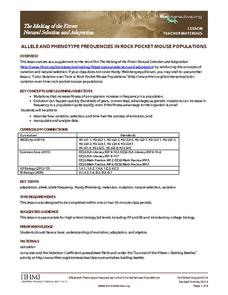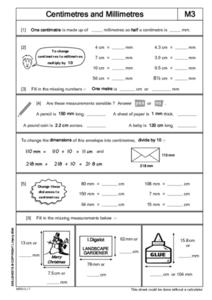Concord Consortium
The Six Faces of Amzora
Here's a task that is out of this world! Given a description of a fictional cube-shaped planet, scholars answer a set of questions about the planet. They create a two-dimensional map and consider the distances between locations on the map.
T. Smith Publishing
Counting on the Farm
Hee-haw! Preschool or kindergarten math pupils identify and count different objects in a lively farm landscape. Beneath the picture, each animal or plant is represented pictorially, and little ones simply write the total count for each....
Curated OER
Lunar Crater Frequency Distributions
In this lunar crater frequency learning exercise, students use the power-law function to solve 3 problems related to the number of craters in a given area. They integrate the power-law function to determine their answers.
EngageNY
Real-World Area Problems
Not all structures take the shape of a polygon. The 21st lesson in a series of 29 shows young mathematicians they can create polygons out of composite shapes. Once they deconstruct the structures, they find the area of the composite figure.
Curated OER
Allele and Phenotype Frequencies in Rock Pocket Mouse Populations
In the deserts of Arizona and New Mexico, some tiny creatures show just how quickly natural selection can turn a mutation into an advantageous adaptation. Watch a video about rock pocket mice, who show that one small change can make all...
Howard Hughes Medical Institute
Color Variation over Time in Rock Pocket Mouse Populations
A species-specific look at natural selection, the resource herein examines how adaptations have helped the population of rock pocket mice survive in a changing landscape. To begin, middle or high schoolers watch a 10.5 minute video,...
Berkshire Museum
Adopt a Schoolyard Tree
Help young scientists connect with nature and learn about trees with a fun life science lesson. Heading out into the school yard, children choose a tree to adopt, taking measurements, writing descriptions, and drawing sketches of it in...
Curated OER
Centimetres and Millimetres
For this measurement worksheet, students convert centimetres to millimetres and millimetres to centimetres. Normal objects are used for examples of measurement.
Curated OER
Excel
In this technology worksheet, students are taught how to create documents using Excel. They follow the directions on a handout to help them create documents. They print their final work and submit it.
Curated OER
Co-ordinates
In this co-ordinates worksheet, students draw buildings following directions to drawing and connecting co-ordinates on graph paper. Students complete 4 drawings.
Curated OER
Dorothy and Kansas: A Volume Problem
This worksheet contains 1 Algebra II scenario where students must determine the volume of a tornado, Kansas, and the space needed to take all of Kansas to OZ. Full explanation with equations are included.
Curated OER
Differences in amounts
In this differences in amounts learning exercise, students solve word problems where they figure out differences of amounts of two and three digit numbers. Students complete 10 multiple choice questions.
Curated OER
Glasgow-- Scotland's Largest City
In this geography of Glasgow worksheet, students examine a detailed bird's eye view of the city in Scotland. Students discover the location of the city center in relation to the ocean by studying the unlabeled map. There are no questions.
Curated OER
Gorilla Alphabet and Number Cards
For this gorilla alphabet and number cards worksheet, students color and cut apart a separate card for each upper and lower case (Zaner-Bloser) alphabet letter. Students also color the number cards from 1 to 10.















